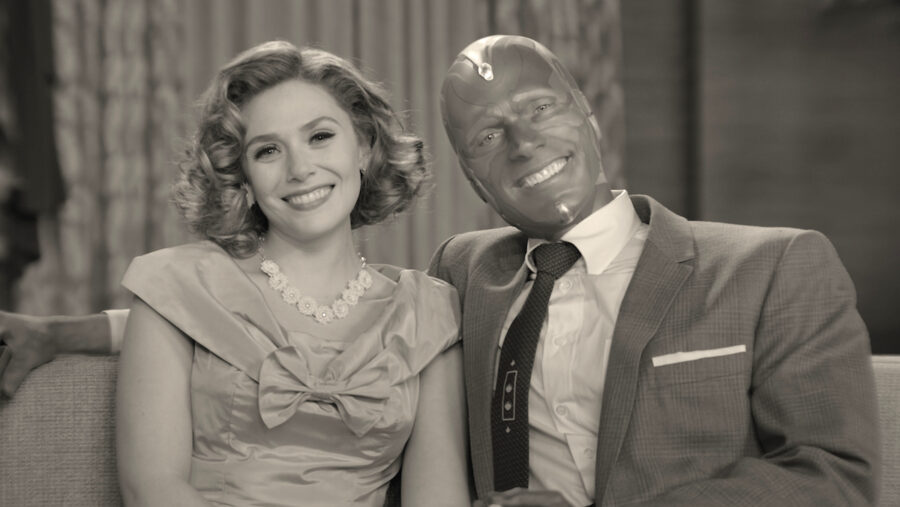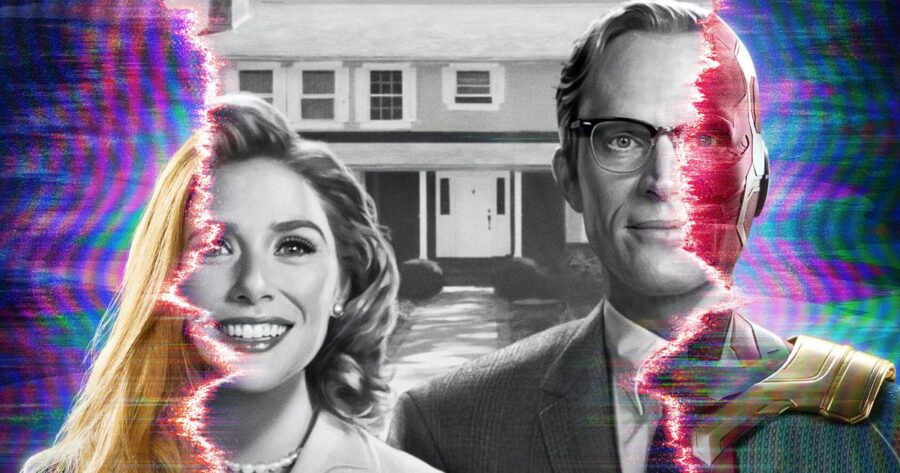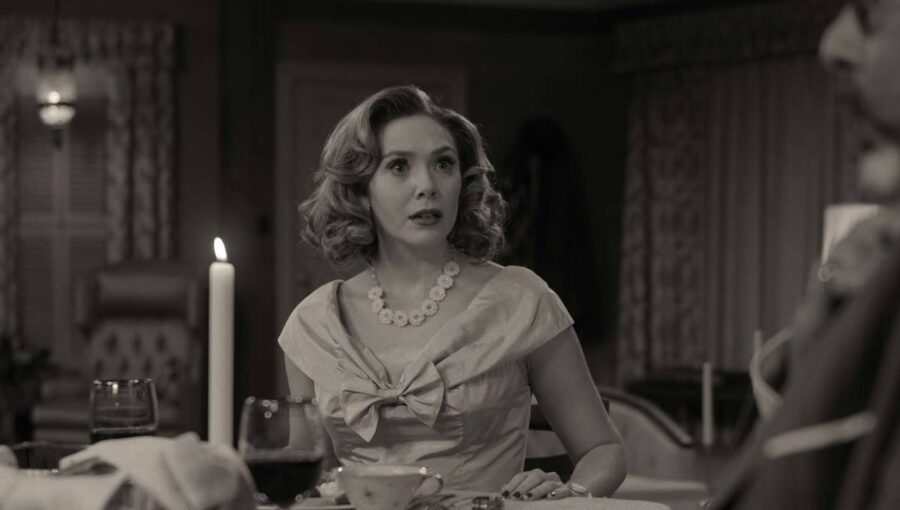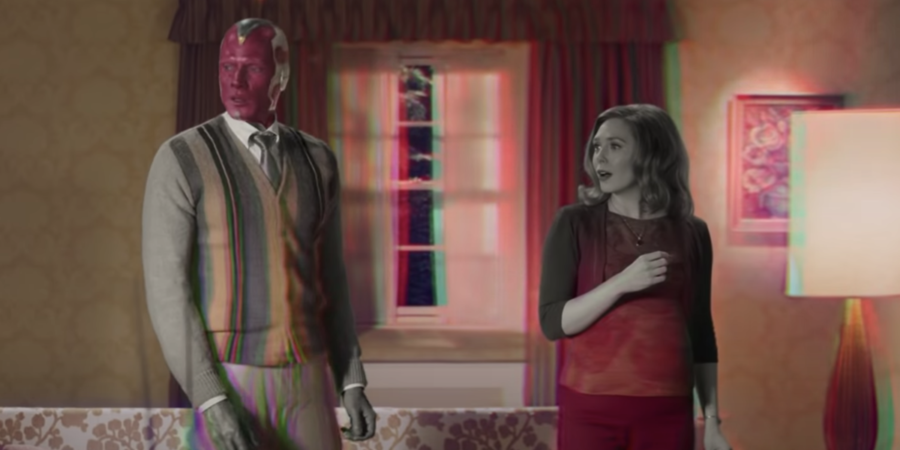WandaVision Shows Marvel Has Trouble Getting Used To Smaller Storytelling
WandaVision is a striking but mixed experiment for Marvel.
This article is more than 2 years old

For the last few years, Marvel has tried to figure out how to integrate television into their larger stories. Netflix’s Marvel productions like Daredevil and Jessica Jones told smaller, grittier stories within their own confined universe. Meanwhile, Agents of S.H.I.E.L.D. tied into the Marvel Cinematic Universe, yet never in a way that made it feel essential to the overall plans. But as the first Marvel Cinematic Universe project in over a year-and-a-half, and the kick-off for the studio’s Phase Four, WandaVision attempts to break the mold of what Marvel has done with television series in the past.
WandaVision is just the first of many, many planned shows for Disney+ that will work alongside Marvel’s films to tell the full story of the Marvel Cinematic Universe. The plan is ambitious, sprawling, and also sort of exhausting. While there hasn’t been an installment of the Marvel Cinematic Universe since July of 2019, Phase Four’s slate of over ten films and a dozen television series will make sure that we never have long to wait for our favorite superheroes again.
But WandaVision is a curious beginning to this expansive experiment. WandaVision – created by Captain Marvel writer Jac Schaeffer – presents Wanda Maximoff (Elizabeth Olsen) and Vision (Paul Bettany) in an idyllic sitcom scenario, complete with a suburban home, theme song, and kooky neighbors, all in black-and-white. In fact, each of the first three episodes – and likely more after that – is based on a classic sitcom. The first episode is so inspired by The Dick Van Dyke Show, Wanda and Vision’s house looks almost identical to that of the Petrie family, as WandaVision director and Kevin Feige even consulted Dick Van Dyke about making classic sitcoms. The second episode is more inspired by Bewitched, fitting, considering Wanda Maximoff’s powers of levitation, while the third takes The Brady Bunch as its reference point.

Yet the last we saw of Vision, he was having the Mind Stone ripped out of his head by Thanos, leaving Wanda to watch her beloved die. Without any explanation as to why these two are now reunited, WandaVision exists with an aura of uncertainty around it. Certainly, this superhero couple in their perfect television neighborhood and the quirky scenarios they’re thrown into is too good to be true? Instead of WandaVision being just a clever homage to classic television, this new environment for these two heroes almost acts like a sitcom purgatory, seemingly with an uncertain purpose.
Having watched the first three of WandaVision’s nine episodes, the most shocking thing might be how strictly it adheres to its sitcom formula. In the first episode, Vision brings his boss home for dinner with a completely unprepared Wanda struggling in the kitchen. In the next, Wanda and Vision put on a magic show for an elementary school fundraiser. The first two episodes are almost completely in black-and-white, and both have all the beats and jokes of a classic sitcom, but with a twist. For example, when trying to make dinner, Wanda makes the pots and pans fly around the kitchen, and during the magic show, both Wanda and Vision have to cover up the fact that they’re using real magic.
Even though WandaVision gives us small hints that this isn’t the peaceful sitcom suburbia that we’ve seen on television for decades, it only disrupts this sitcom existence for so long, at least in the first two episodes. The third episode continues this sitcom trend, but does expand slightly on what’s going on. The show becomes more overt about the mysterious goings-on, but it takes quite a while for WandaVision to start showing its cracks. It’s fascinating how dedicated WandaVision is to sticking to its formula, yet it might be off-putting for those expecting action and Marvel’s usual insanity. For those hoping Marvel would be a bit more inventive in their style and storytelling, these first few episodes give the audience just that.

Marvel’s shift to Disney+ and television programming is a promising way to experiment with the look and feel of the Marvel Cinematic Universe, and is also an opportunity to shine the spotlight on characters that have been supporting players for years. But it also shows that WandaVision’s biggest weakness might be the studio’s inability to tell stories in a smaller medium. Marvel has proven they can effectively tell huge stories, yet with these first three episodes of WandaVision, it becomes clear that Marvel might not know how to handle episodic storytelling, a half-hour at a time.
WandaVision might be a great season as a whole, but it will take several months to see the larger picture. Meanwhile, on an episode-by-episode basis – at least in these first three episodes – there’s little forward momentum and clues at the larger story being told, which could be a problem for viewers watching this from week-to-week. At this early stage, it looks as though Marvel envisioned WandaVision as a 4 1/2 hour movie, rather than nine separate episodes that each need their own individual arcs to draw in the viewer and have them return for the next installment. It’s hard to watch these first three episodes and not think that Marvel might have served the story better had this entire season been released all at once.
But that isn’t to say WandaVision isn’t compelling. These first three episodes play like a combination of Pleasantville, The Truman Show, and the ambitious genre-explorations of Legion. WandaVision lures the audience in with its comforting, nostalgic surroundings, before breaking through that facade. But again, these breaks take their time coming, and do little more than show that something isn’t right, rather than explaining anything concrete about this world that is being built. It’s engrossing when the show pulls off these moments, but by the end of the third episode, it also seems that when the show finally diverts from this false world, underneath might just be another standard Marvel movie that looks and feels like the others.

Of course, this all depends on how the season plays out, but at the very least, WandaVision is a great opportunity to give Elizabeth Olsen and Paul Bettany center stage. Olsen falls into the tropes of sitcoms with ease, a natural at adapting to these scenarios, while especially in the second episode when Vision gums up his gears, we get to see the humor and warmth that Bettany can bring to this character. Just as compelling are newcomers to this universe, like the nosy neighbor Agnes, played by Kathryn Hahn, and Geraldine, a mysterious new addition to the town, played by Teyonah Parris. Hahn, Parris, and the entire town are a fun group, who only get more intriguing over these three episodes.
Since introducing the Marvel Cinematic Universe, Marvel has shown they have a desire to tell a massive story through multiple films over several years, almost like the modern-day equivalent of serial films. But with WandaVision, the studio’s first concerted effort to integrate television into their larger plans, Marvel shows they may be able to tell a new story over the course of a season but struggle to do so on an episode-by-episode basis. Marvel has focused over the years so much on telling stories in a macro sense, with WandaVision, they struggle to further the narrative in the micro.












